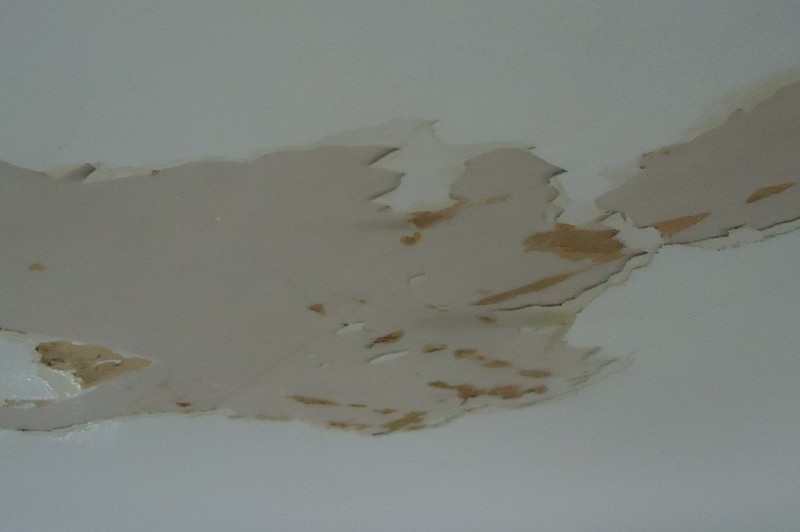Have you been frustrated in knowing who covers the removal of water damaged sheetrock? Water damage is often covered by home insurance, although in certain circumstances where coverage is not applicable. It will depend on the water damage brought by the reason why it happened.
Water leaked into drywall or sheetrock in your walls or ceilings will leave your space looking undesirable. Once damage develops, it is usually due to roofing defects.

The definition is somewhat wide in this instance and could be referring to a missing tile, a loose roof shingle, or an unrepaired vent. Sheetrock needs only a small amount of water leaking to destroy previous sheets.
Moisture encourages mold growth, and as a result, you may have mold issues, or your wall or ceiling could fall or crumble. However, if your ceilings or walls have water damage, you can restore them. Removing the guesswork from drywall repair is part of the process.
Should Water Damaged Sheetrock Be Removed?
Even if you only repair your existing drywall, you must act quickly. If you see any bulging or sagging, you can try to drain the water by making a hole in the ceiling and pressing a nail through it, which should release the air trapped inside. Prepare yourself for a large volume of water to flow into the bucket.
Next, you should use your fingers to poke the ceiling to determine if the drywall is still firm. Again, if you haven’t encountered water damage, you may not have incurred water damage.
In this case, soft or spongy sheetrock needs replacement. You can remove the problematic piece of the ceiling and replace it.
It could prove tough for folks who are not competent at drywall finishing. In addition, several pipes and cables on the other side of the ceiling could be damaged if you accidentally cut them.
If your walls are damaged, assess the situation to discover if the sheetrock can be saved. With severe water damage, mold growth and ceilings collapse are both significant hazards. When drying off the wet drywall, check the sheetrock to see whether it is still solid.
While water infiltration has the potential to damage drywall, it is a lot more likely to do so once the drywall has begun to break down. Therefore, inspect your roof and pipes regularly to protect your house. Reducing your chance of water damage by much can considerably minimize your danger.
What Kind Of Water Damage Does Insurance Cover?
Most homeowners insurance policies include coverage for water damage in various situations. Sudden water damage must be internal, and it must occur in your home to be covered by regular homeowners insurance. Your water policy may stipulate that the water has not touched the earth anywhere other than delivery trucks.
The destruction of your property and your home can be caused by water damage, which may necessitate the replacement of damaged items, repairs to the structural components of your home, and even temporary relocation.
Water damage depends on the source. Pipes that rupture rarely go without covering. You’ll often need to purchase a separate flood insurance policy because floods are almost always excluded.
Homeowners’ insurance may additionally include coverage for repairing or replacing damaged items, as well as three categories of coverage.
Dwelling coverage clause
Home insurance that includes dwelling coverage covers the structure of your home from covered perils, should it be harmed. To put it another way, if a pipe unexpectedly bursts and damages a wall, it may be possible to get coverage to cover the damage.
Your home may be covered in some of the following places: the walls, the roof, and the flooring. If you must remove a part of a wall to fix a leak, or if a covered leak damages your home, your dwelling coverage will pay for it. Most insurance policies cover the structural components of your house and built-in appliances if something happens to them.
Personal property coverage clause
It helps cover the cost of replacing lost or damaged personal belongings should the covered peril cause the loss. Therefore, if a broken pipe causes objects like a computer desk or bookcase to be completely saturated, the policyholder’s property coverage could assist pay for the repairs or replacements.
Make sure you remember that a deductible may apply before your insurance covers you. Additionally, coverage limits may apply. Know how much coverage your policy provides by reading your policy.
Your agent can help you find ways to include other aspects of your life or answer any problem you may have about your insurance.
Additional living expenses coverage clause
Some people who own houses also buy ALE coverage, which reimburses them for food, accommodation, and travel expenses if they temporarily relocate because of water damage.
Conclusion
Now that you know who covers removing water-damaged sheet rock, you will no longer have a hard time researching. We also added some additional information about water damage insurance to know your clauses and what they cover. This way, it will be easier for you to assess water-damaged things around the house.
